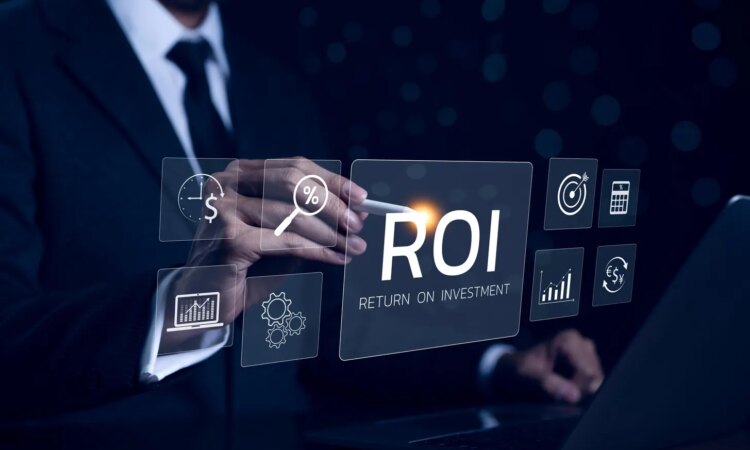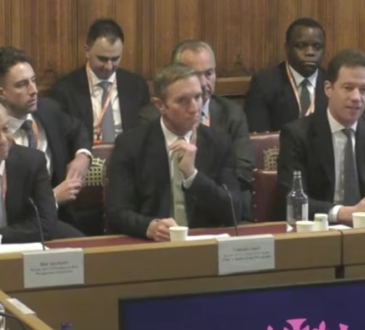
Sustainable buildings, if implemented holistically, could command rental premiums, achieve lower operating costs, and experience faster leasing velocity
getty
The global commercial real estate industry stands at a critical and undeniable inflection point. After two decades of incremental progress, the journey toward sustainable building practices has accelerated into a full-scale transformation. The imperative to activate the built environment as a primary solution to the climate-related risks has never been more urgent, yet the associated valuation methodologies have never been more complex.
The central challenge remains annoyingly persistent: while sustainability initiatives have matured dramatically since the early 2000s, the industry’s ability to precisely quantify the financial impact of these investments within traditional valuation frameworks continues to lag. What was once a distinguishing feature, a “green” building certification, is rapidly becoming table stakes in premium markets. Simultaneously, the metrics that truly matter are undergoing a profound transformation, shifting from design-based metrics to verifiable performance outcomes. Colliers’ research, supported by global market data and investor sentiment analysis, reveals a market in flux, where the pursuit of sustainability programs and credentials must evolve beyond superficial badge collection toward genuine performance accountability and measurable financial and environmental benefits.
The built environment accounts for nearly 30% of global energy consumption, 26% of related CO2 emissions stem directly from building operations. The CRE industry faces mounting pressure to fundamentally reimagine how it values, finances, and operates assets in a carbon-constrained world. Over 75% of global real estate investors now consider climate risks in investment decisions. However, the very financial mechanisms designed to measure property performance and value struggle to capture the economic impact of these efforts with the necessary precision and consistency.
A critical, and perhaps unfortunate, consequence of the urgent focus on solving this problem is the conceptual narrowing of “sustainability” itself. Within the CRE vocabulary, the term sustainability has become increasingly synonymous with environmental performance, which in turn has been further reduced to a single, albeit crucial, metric: carbon emissions. The market, in its quest for quantifiable and comparable data, is gravitating toward solving a profoundly multidimensional problem with a one-dimensional solution. This reductive approach, while well-intentioned, risks obscuring the true nature of a high-performing, resilient assets and misallocating capital toward buildings that are sustainable on paper but fragile in practice.
True operational sustainability is not merely an exercise in carbon accounting; it is an integrated, holistic system where environmental performance is an outcome of, and contributor to, superior social and governance frameworks. This sophisticated interplay manifests in several critical areas that are often undervalued in a carbon-centric model:
- Sophisticated tenant engagement: The relationship between landlord and tenant is evolving from a transactional arrangement to a strategic partnership. In a truly sustainable building, engagement moves beyond annual satisfaction surveys. It involves co-creating value through shared data, collaborative efficiency projects, and alignment on mutual sustainability objectives. This symbiotic relationship fosters higher retention, reduces leasing friction, and builds a resilient community within the asset, a powerful, though less easily quantified, form of risk mitigation.
- Human-centric design and operation: A building’s impact on health, safety, and occupant well-being through superior indoor air quality, biophilic design, acoustic comfort, and access to natural light is a tangible economic asset. A building that can verifiably enhance employee productivity, reduce absenteeism, and promote well-being is not just commodity space; it is a critical component of the tenant’s business success. The value proposition shifts from “cost per square foot” to “value per employee,” a metric on which carbon-optimized but human-unfriendly buildings will inevitably fail.
- Technology-enabled operational excellence: The governance and operational backbone of a sustainable asset is increasingly digital. The deployment of a sophisticated proptech stack incorporating Internet of Things sensors, digital twins, AI-driven predictive maintenance, and integrated building management systems is fundamental to achieving holistic sustainability. This technology does not only optimize energy consumption, but also enhances the occupant experience, streamlines facility management workflows, provides real-time data for capital planning, and improves the building’s resilience to physical and mechanical failures. A building that leverages technology to move from reactive to predictive operations is fundamentally less risky and more efficient to own and manage. This operational intelligence is a core attribute of a modern sustainable asset, yet it is entirely invisible in a simple carbon emissions report.
Regulatory Momentum Amid Political Uncertainty
To appreciate the current inflection point, one must understand the trajectory that brought us here. The regulatory landscape has evolved substantially, particularly in the wake of the 2015 Paris Agreement, which catalyzed unprecedented momentum in sustainable real estate. Over the past two decades, green certifications like LEED and BREEAM proliferated globally, becoming the primary language through which owners, developers, investors, and occupiers communicated sustainability. These frameworks matured, LEED alone progressed through multiple versions, while jurisdictions worldwide developed localized schemes.
The investment landscape confronting investors in 2025 presents a confluence of transformative forces. Geopolitical realignments, disruptive technological breakthroughs, particularly in artificial intelligence, and escalating environmental challenges are reconfiguring risk-return profiles across all asset classes. The energy transition’s cascading effects, the intensifying physical impacts of climate change, and the systemic risks associated with AI demand analytical frameworks that extend beyond conventional financial metrics.
Today, asset owners navigate an increasingly complex matrix of mandatory disclosure requirements, building performance standards, and steep financial penalties for noncompliance in a growing number of jurisdictions. New York City’s Local Law 97 exemplifies this evolution, mandating that buildings over 25,000 square feet reduce emissions by 40% by 2030 and 80% by 2050, with penalties of $268 per tonne of CO₂e for excess emissions. This could amount to hundreds of thousands of dollars in additional annual operating costs for noncompliant buildings.
European jurisdictions are moving even more aggressively. The EU’s revised Energy Performance of Buildings Directive requires member states to establish roadmaps toward zero-emission building stocks by 2050. In Canada, cities are leading the charge. Toronto’s TransformTO strategy targets net-zero carbon by 2040, supported by programs like the Deep Retrofit Challenge. Vancouver’s Climate Emergency Action Plan is pushing bylaws to limit embodied carbon in new construction and constrain emissions in all buildings, aiming for a 50% reduction by 2030.
These regulatory dynamics fundamentally alter the calculus of building performance. Where energy efficiency was once about differentiation and operational savings, it is now about legal compliance, financial risk mitigation, and asset liquidity. Buildings failing to meet these standards face a trifecta of risk: direct financial penalties, reduced marketability to compliance-conscious tenants, and difficulty securing financing from lenders wary of regulatory obsolescence. This shift accelerates the obsolescence of “brown” buildings while creating profound urgency around retrofit investment.
Even with political complexities, the momentum from institutional investors, lenders, and corporate tenants with their own decarbonization targets appears resilient. This commitment is driven not by political whim but by fundamental risk management and competitive positioning. Meanwhile, the establishment of the International Sustainability Standards Board and its International Financial Reporting Standards’ S1 and S2 standards signals a global move toward standardized, investor-grade disclosure. The International Valuation Standards Council has followed suit, updating its 2024 standards to explicitly require the incorporation of quantifiable and material sustainability factors, cementing their relevance in the valuation process.
The Valuation Challenge: Isolating Green Premiums and Brown Discounts
While a direct “green premium” on cap rates is hard to predict, a “brown discount” for underperforming assets is rapidly becoming a quantifiable reality
getty
Appraisal practitioners face a fundamental challenge in their daily work. Unlike market participants who establish new benchmarks, appraisers must interpret how a “typical” buyer would price an asset by analyzing a complex tapestry of completed transactions, market trends, and economic conditions. Their role is to reflect the market, not lead it.
Isolating the specific value impact of sustainability within this dynamic landscape is exceedingly difficult. Recent market shocks, such as the influx of capital into industrial and multifamily sectors, the bifurcation of retail, and the work-from-home phenomenon pressuring the office market, all carry enormous value implications that can easily mask the subtler effects of sustainability features. Appraisers are thus tasked with quantifying the operational benefits or penalties of sustainability factors while simultaneously justifying their impact on capitalization and risk rates, often with limited direct comparable evidence.
This challenge is compounded by the rapidly advancing sophistication of leading occupiers. The conversation has moved far beyond “What certifications does this building have?” Today’s tenants are asking:
- “What is this building’s Energy Use Intensity and how does it benchmark against local mandates?”
- “What is the carbon intensity of the building’s energy supply, and are there plans to procure renewables?”
- “What is the carbon footprint of the planned capital projects and proposed tenant improvements?”
- “Can you provide a five-year capital plan demonstrating a clear decarbonization pathway?”
These questions demand operational data, forward-looking plans, and a collaborative landlord-tenant partnership. Buildings that cannot provide credible answers risk losing the most sophisticated, creditworthy tenants, whose demand underpins premium valuations. This tenant-led revolution creates a new dimension of risk: tenant flight risk for underperforming assets. Conversely, buildings that proactively deliver verified performance and decarbonization capability can command premiums, not for a plaque on the wall, but for their ability to help tenants achieve their own sustainability goals.
An MSCI Sustainability Institute survey of 350 financial market participants revealed a striking consensus: 84% believe that damage to infrastructure from extreme weather will have a negative impact on regional economies over the next decade. This agreement is a stable anchor in an otherwise fractured analytical landscape. The risk is no longer abstract; it directly impacts a property’s profit and loss statement through soaring insurance premiums, increased capital expenditures for resilience measures (e.g., flood barriers, upgraded HVAC systems), and business interruption costs.
Capitalization Rates: The Elusive Premium and the Vicious Cycle
The most challenging valuation question concerns capitalization rates. Despite evidence of rental premiums and operating cost reductions for sustainable buildings, direct transactional evidence for cap rate compression remains scarce. Several factors contribute to this opacity:
- Limited transaction volume: Elevated interest rates suppressed CRE transactions from 2022 to 2024, shrinking the available data pool.
- Baseline shift: As sustainability becomes standard in new construction, the “conventional” comparison set is disappearing, making it difficult to isolate a premium.
- Location primacy: Traditional fundamentals such as location, access, and amenities, still overwhelmingly influence pricing, often masking sustainability’s impact.
- Data fragmentation: This is the most critical barrier. Transaction databases have not systematically captured sustainability attributes. Energy consumption, carbon intensity, and resilience features are rarely captured as searchable data fields, preventing systematic analysis.
This opacity creates a vicious cycle: without transparent data, appraisers cannot derive market-based adjustments; without consistent valuation recognition, investors cannot quantify returns on sustainability investments; and without quantified returns, capital allocation remains suboptimal.
Breaking this cycle requires transforming sustainability valuation into a data management issue. The path forward demands coordinated action:
- Database enhancement: Transaction platforms like CoStar and MSCI must incorporate standardized sustainability data fields.
- Voluntary disclosure: Asset owners should recognize that market transparency ultimately benefits all participants by reducing information asymmetry and supporting more efficient pricing.
- Standardized reporting: Widespread adoption of ISSB standards will create a consistent, comparable dataset over time.
Sustainable Finance: Transforming Asset Valuation
The emergence of specialized financing platforms represents a structural shift in how sustainability is capitalized. In Canada, government-backed institutions like the Canada Infrastructure Bank and the Canada Mortgage and Housing Corporation are playing a crucial role. CMHC’s multifamily sustainability program offers exceptional terms for projects meeting high sustainability criteria. This includes loan to value ratio up to 95% and amortization up to 50 years.
In the United States, Commercial Property Assessed Clean Energy financing has seen exponential growth, providing long-term, low-cost capital for efficiency and resilience improvements. Green loan requests are increasingly receiving expedited processing, and while widespread interest rate discounts are not yet the norm in North America, other preferential terms are emerging:
- Higher loan amounts: The lower risk profile and higher potential net operating income of green buildings are supporting slightly higher loan to value ratios.
- Extended amortization: The perceived durability and long-term value of green assets justify longer repayment periods, improving borrower cash flow.
As lenders become more adept at quantifying the reduced obsolescence and default risk of high-performing assets, direct interest rate benefits, already observed in some European markets, are expected to follow.
Social Risks Are Reshaping Real Estate Valuation
An often-overlooked trend reshaping portfolio risk is social factors. An analysis of the MSCI ACWI Index reveals that over the past decade, the information technology and communication services sectors have grown dramatically, displacing higher-polluting sectors like energy and materials. This sectoral reweighting has direct implications for commercial real estate. The tenants occupying premium office space today are more likely to be tech and professional services firms than oil and gas giants. Consequently, they demand buildings that promote employee well-being, health, and productivity. A building’s ability to provide superior indoor air quality, access to natural light, and amenities that support a positive corporate culture is no longer a “nice-to-have”; it is a direct driver of leasing velocity, tenant retention, and rental rates.
A New Valuation Framework: Key Recommendations
To bridge the gap between sustainability performance and financial valuation, we need:
- Enhanced appraiser proficiency and expert collaboration: Sustainability is now a technical specialization. Appraisers should collaborate with sustainability experts on complex assignments, just as they engage environmental consultants for contamination assessments. Professional bodies must expand educational offerings and consider creating specialized credentials to signal expertise in this domain.
- Radical market transparency and data sharing: The CRE industry must prioritize the creation of a robust data infrastructure. This involves enhancing transaction databases with standardized sustainability fields and encouraging asset owners to disclose performance data.
- Integrated underwriting and valuation: The sophisticated sustainability and climate risk analysis conducted during acquisition must be carried into ongoing asset valuation. Investment models that include line items for future liability or mandated retrofit capex should be mirrored in appraisal models to ensure consistency and accuracy.
- Embrace performance-based valuation: The industry must accelerate the shift from valuing certifications to valuing performance. This means integrating metrics like EUI, carbon intensity, and climate resilience scores directly into valuation models, adjusting cash flow projections, and refining risk premiums to reflect these new realities.
- Holistic sustainability assessment beyond carbon: Valuations must expand beyond carbon emissions to encompass the full spectrum of sustainability factors that drive long-term asset value, including water efficiency, waste management, biodiversity impact, technology integration, climate and cyber risk exposure, occupant health and safety, and tenant engagement metrics. This comprehensive approach recognizes that buildings impact the environment through multiple pathways and that stakeholders increasingly demand performance across all sustainability dimensions, not just carbon intensity. Modern valuation frameworks should account for water scarcity risks, material circularity potential, and the building’s contribution to urban ecosystem health.
The Path Forward in a New Reality
Commercial real estate has embarked on a transformative journey. The awareness of sustainability is universal, the regulatory frameworks are tightening, and the tenant demands are clear. Yet the translation of these advances into financial valuations remains the industry’s most significant unfinished business.
The evidence overwhelmingly suggests that sustainable buildings, if implemented holistically, could command rental premiums, achieve lower operating costs, and experience faster leasing velocity. While a direct “green premium” on cap rates remains elusive, a “brown discount” for underperforming assets is rapidly becoming a quantifiable reality. Buildings facing regulatory noncompliance, tenant flight, financing restrictions, and unmitigated physical climate risks will suffer measurable value impairment. This creates a powerful imperative for action, independent of a proven premium.
The path forward requires transparency, collaboration, and sustained analytical rigor. The question is no longer whether climate risk and sustainability affect CRE valuation – they demonstrably do. The question is whether the industry will collectively build the analytical frameworks, data infrastructure, and market conventions to capture these effects with the precision that prudent financial management demands. Success requires not merely incremental adjustments but a fundamental reimagination of how we conceive, construct, operate, value, and finance the spaces in which we live and work. The future of real estate value will be defined by performance, and the time to measure it is now.





